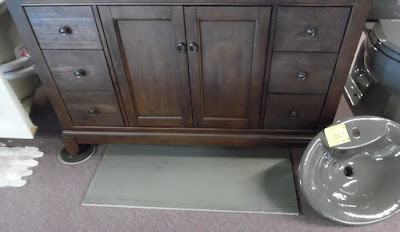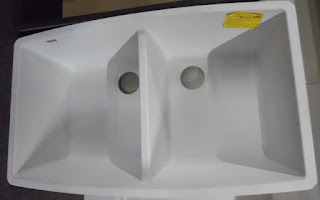The colors of the rooms in your home are a direct reflection of your personality. While most of us may not spend a lot of time thinking about room color, it affects us every day. Room color can influence our moods and our thoughts.
Color affects people in many ways, depending on age, gender, ethnic background and climate. Certain colors (or groups of colors) tend to get a similar reaction from most people; the variations come from the shades or tones used. This is why it’s so important to choose colors wisely when it comes to the mood you want to create in your home.
You don’t have to worry about trends in order to have a beautiful home. Color trends will come and go. You make a home beautiful by choosing colors that reflect your preferences and personality. The trick is to blend the colors you like into a pleasing combination.
Choosing color combinations is one of the most intimidating steps for beginners. Color has the power to change the shape and size of furnishings, as well as the shape and size of the room itself. Selecting colors is not difficult if you equip yourself with some basic information about color and its effects.
Let’s find out more about room colors and how they influence your mood.
Choose Wisely:
Keep in mind that each color has a psychological value. Think about how certain colors make you feel; they can influence any emotion, from tranquility to rage. To create peace and harmony in your home, choose your colors wisely; some colors in large amounts might have the opposite effect on you and your loved ones.
What mood do you want to create? Which colors will help you achieve that mood?
If you need help answering these questions, look at magazines, decorating books, blogs and websites for ideas. Also, let your textiles be your guide. Fabric, carpeting, furniture and tile are available in a more limited range of colors than paint, so choose them first and then decide on your paint color.
Once you find something you like, limit the number of colors in a room to no more than three or four. Too many colors can make a room look extremely busy or cluttered. Paint is fairly inexpensive and transforms a room more quickly than anything else, so you can afford to experiment a little.
Room Colors and Their Effects:
Colors act in three basic ways: active, passive and neutral. You can easily match every room’s colors to your personal desires, to your taste and to the room’s purpose. Light colors are expansive and airy, making rooms seem larger and brighter. Dark colors are sophisticated and warm; they give large rooms a more intimate appearance.
Let’s take a closer look at colors and learn what they can do to a room.
Red raises a room’s energy level. The most intense color, it pumps the adrenaline like no other hue. It is a good choice when you want to stir up excitement and passion, particularly at night. In the living room or dining room, red draws people together and stimulates conversation. In an entryway, it creates a strong first impression.
Red has been shown to raise blood pressure and speed respiration and heart rate. It is usually considered too stimulating for bedrooms, but if you’re typically in the room only after dark, you’ll be seeing it mostly by lamplight, when the color will appear muted, richly sensual and elegant.
Yellow captures the joy of sunshine and communicates happiness. It is an excellent choice for kitchens, dining rooms and bathrooms, where it is energizing and uplifting. In halls, entries and small spaces, yellow can feel expansive and welcoming.
Even though yellow although is a cheery color, it is not a good choice for main color schemes. Studies show that people are more likely to lose their temper in a yellow interior. Babies also seem to cry more in yellow rooms. In large amounts, this color tends to create feelings of frustration and anger. In chromotherapy, yellow is believed to stimulate the nerves and purify the body.
Blue is said to bring down blood pressure and slow respiration and heart rate. That is why it is considered calming, relaxing and serene, and it is often recommended for bedrooms and bathrooms.
A pastel blue that looks pretty on the paint chip can come across as unpleasantly chilly on the walls and furnishings, however, especially in a room that receives little natural light. If you opt for a light blue as the primary color in a room, balance it with warm hues for the furnishings and fabrics.
To encourage relaxation in social areas such as family rooms, living rooms or large kitchens, consider warmer blues, such as periwinkle, or bright blues, such as cerulean or turquoise. Blue is known to have a calming effect when used as the main color of a room — but go for softer shades. Dark blue has the opposite effect, evoking feelings of sadness. You should refrain from using darker blues in your main color scheme.
Green is considered the most restful color for the eye. Combining the refreshing quality of blue and the cheerfulness of yellow, green is suited for almost any room on the house. In the kitchen, green cools things down; in a family room or living room, it encourages unwinding but has enough warmth to promote comfort and togetherness.
Green also has a calming effect when used as a main color for decorating. It is believed to relieve stress by helping people relax. It is also believed to help with fertility, making it a great choice for the bedroom.
Purple, in its darkest values (eggplant, for example), is rich, dramatic and sophisticated. It is associated with luxury and creativity; as an accent or secondary color, it gives a scheme depth. Lighter versions of purple, such as lavender and lilac, bring the same restful quality to bedrooms as blue does, but without the risk of feeling chilly.

Orange evokes excitement and enthusiasm, and is an energetic color. While not a good idea for a living room or for bedrooms, this color is great for an exercise room; it will bring out all the emotions that you need released during your fitness routine. In ancient cultures, orange was believed to heal the lungs and increase energy levels.
Neutrals (black, gray, white and brown) are basic to the decorator’s tool kit. All-neutral schemes fall in and out of fashion, but their virtue lies in their flexibility: Add color to liven things up; subtract it to calm things down.
Black is best used in small doses as an accent. Indeed, some experts maintain that every room needs a touch of black to ground the color scheme and give it depth. To make the job easier, rely on the interior designer’s most important color tool: the color wheel.
Crimson can make some people feel irritable. Invoking feelings of rage and hostility, this is a color that should be avoided as the main color of a room. Sitting for long periods of time in a room painted in this color will likely affect the peace and harmony you are striving to create in your home.
Color’s Effect on Ceilings:
The ceiling represents one-sixth of the space in a room, but too often it gets nothing more than a coat of white paint. In fact, for decades, white was considered not only the safest but also the best choice for ceilings.
As a general rule, ceilings that are lighter than the walls feel higher, while those that are darker feel lower. Lower need not mean claustrophobic: visually lowered ceilings can evoke cozy intimacy. As a general rule, dark walls make a room seem smaller, and light walls make a room seem larger.
Color's Effect on the Floor:
Like the ceiling, the floor is one-sixth of a room's surface area, so the floor covering has a major impact on the color personality of the space. It can help create an air of comfort and luxury -- or it can make you want to climb the walls. Study your choices and then decide what will work best for you and your family. Carpet, Hardwood, and tile, an area rugs over any of those? The choice is yours.
These guidelines are a good starting point in your search for a paint color. Keep in mind that color choice is a very personal matter; you are the one who has to live with your new paint color, so choose a hue that suits you, your family and your lifestyle.
Come down to Yourplumberscrack, we have some examples of tile paired with tubs and vanities to help you out with your bathroom choices. WE would love to SEE you today. We are located at 6877 Spencer Highway Sparta TN 38583. That is south of Cookeville, TN via Highway 111.





















































